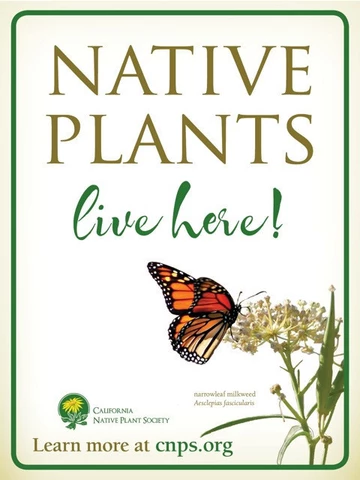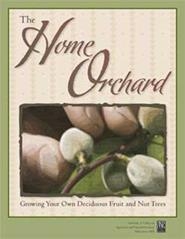
By Susanne von Rosenberg, UC Master Gardener of Napa County
Adding one or more trees to your garden can make a very big difference. Trees are amazing. They can provide shade and fruit, save energy, support wildlife and help reduce global warming.
Autumn is the best time to plant deciduous trees in Napa County, so it's not too soon to start thinking about trees you might want to add. Here are some tips and suggestions for choosing wisely.
First, know where you're planting. How much sun, shade and wind is there? Will you be planting under or near a power line? What kind of soil do you have?
Make sure you know the maximum height of the tree and how wide it is likely to get. Many a homeowner has had to make the sad decision to remove a tree that was simply too big for its location.
We love that trees provide shade, but we need them to shade the right places. It's also important to be considerate of the shade a tree might cast on neighbors' properties.
If you want to keep your house cooler, plant a tree with a wider canopy on the south, southwest or west sides of your home. You'll want your shade tree to be deciduous, so you can get the benefit of the sun in the winter.
Planting trees to shade your home will have a real pay-off. The Urban Forestry Network estimates that shade trees can reduce the need for air conditioning in homes and offices by up to 30 percent. If you don't have air conditioning, trees can simply keep your home much more livable in the summer.
The same idea applies to shade in your garden. One of my favorite places to be in the summer is in the dappled shade of a tree, reading a great book.
If you are interested in supporting wildlife, consider planting a California native tree or any tree compatible with native shrubs and other plants. Sometimes that's as easy as allowing an oak seedling that happens to be in the perfect location to grow. I have one growing in the center of my front yard. Thank you, squirrels!
If your squirrels are not as obliging, the California Native Plant Society has a lot of information on native plants. Visit the CalScape website for a listing of 186 native trees (https://calscape.org/loc-California/cat-Trees/ord-az/np-0/vw-list/page-2? ). The Napa chapter of the Society has plant sales in the spring and the fall, with plants that are particularly suited to Napa County.
If you want to plant fruit or nut trees but aren't sure how to choose the ones best for your site or how to plant and care for them, consult the Napa County Master Gardener website for advice. If you don't have a lot of space, consider coordinating with neighbors to grow a variety of fruit trees and share the harvest. Fruit trees can be kept compact through pruning and still yield a lot of fruit. They do need regular water and fertilizing, as well as plenty of sun, to produce properly.
If you're strategic in your choices, your trees can serve multiple purposes. I planted an almond tree about 30 feet from the southwest corner of my house. As it gets taller, it will provide shade. It's still a young tree, but I've already gotten some almonds. Mostly, though, my almond tree has become a living bird and squirrel feeder. Because I don't cover it with netting, my animal friends get most of the almonds before I do. I love watching them play in the tree.
Even if you don't need another tree, there are environmental reasons to plant a few. According to the Urban Forestry Network, if every American family planted just one tree, the amount of carbon dioxide in the atmosphere would drop by one billion pounds annually. (You read that correctly.). That's nearly 5 percent of what we humans generate each year.
What's more, a mature tree can release enough oxygen to support two people. A recent study published in the journal Nature suggests that if humans planted forests on all available suitable land (terrain that can support trees and is not currently used by humans), we would compensate for almost all of the extra carbon we have put into the atmosphere since the Industrial Age. You can read the story here: https://www.scientificamerican.com/article/massive-forest-restoration-could-greatly-slow-global-warming/?utm_source=pocket-newtab.
What kind of tree are you going to plant?
Next workshop: “Cool-Season Vegetables: Now is the Time to Plan and Start” on Saturday, August 10, from 9:30 to 11:30 a.m., at the University of California Cooperative Extension, 1710 Soscol Avenue, Napa. Repeated on Sunday, August 11, from 1 p.m. to 3 p.m. in Yountville. For more details & online registration for the Napa workshop: http://napamg.ucanr.edu. Or call 707-253-4221. For the Yountville workshop, go to Online Yountville registration or telephone the Parks & Recreation Department at 707-944-8712.
The UC Master Gardeners are volunteers who provide UC research-based information on home gardening and answer your questions. To find out more about upcoming programs or to ask a garden question, visit the Master Gardener website (http://napamg.ucanr.edu) or call (707) 253-4221 between 9 a.m. and noon on Mondays, Wednesdays or Fridays.
Attached Images:

